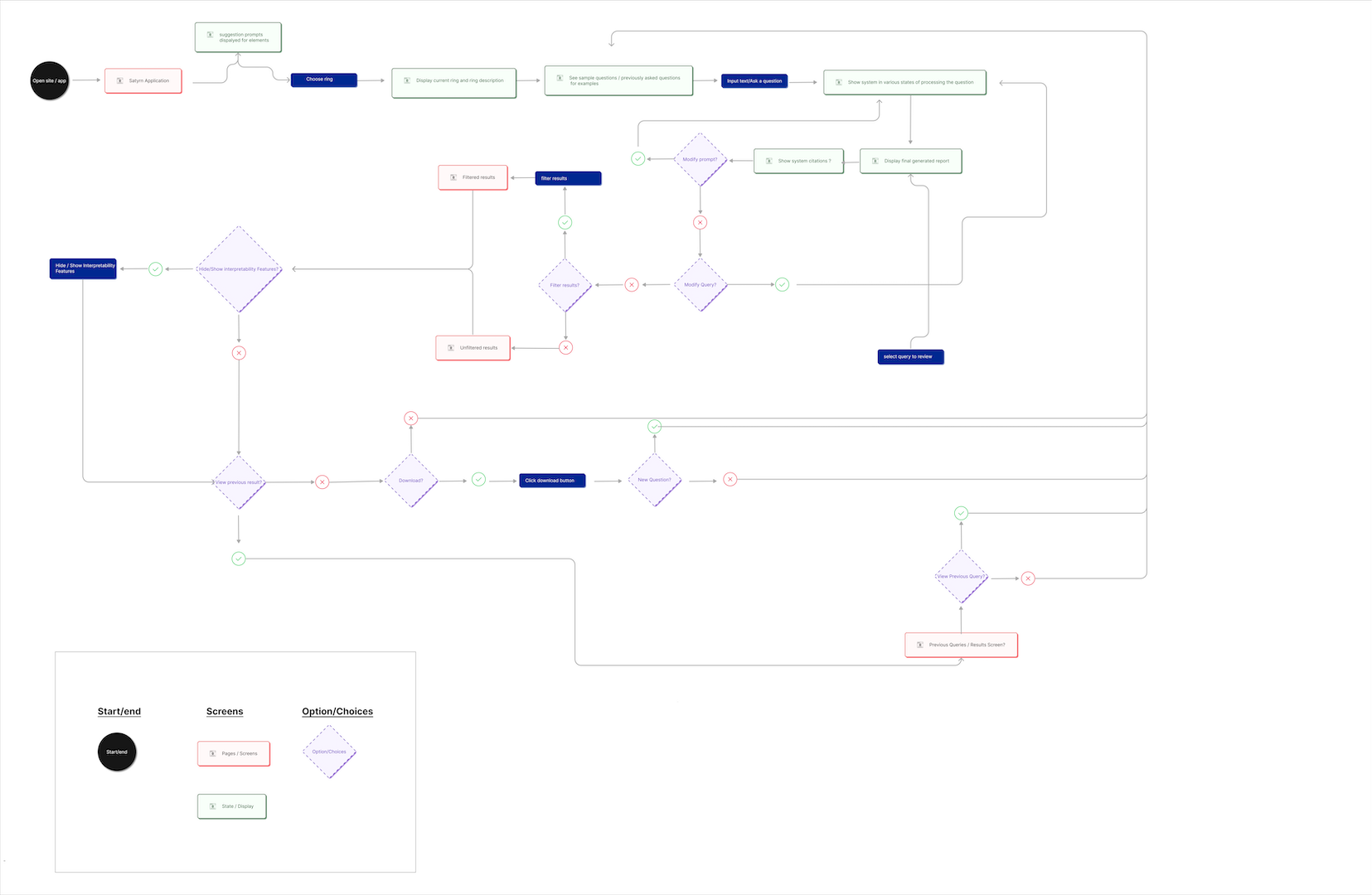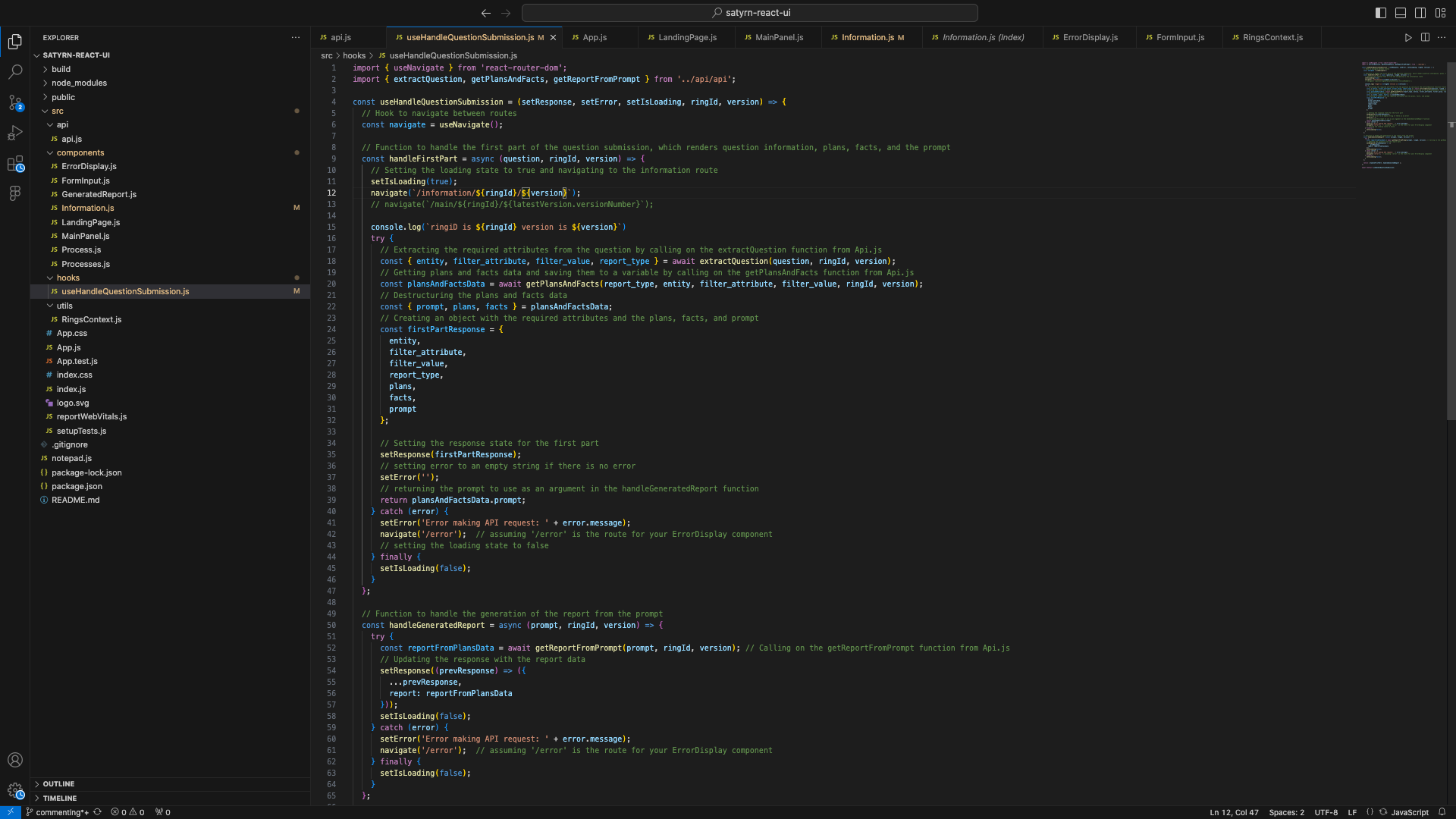The Process
To achieve these objectives, this is the process I followed:
Research: I conducted in-depth research into the project's goals
and user requirements, laying the foundation for the design phase.
User
Stories: I crafted user stories to capture specific user interactions and scenarios, ensuring that
the application met the needs of its intended audience.:
User Flows: Collaborating
closely with the team, I created comprehensive user flows that guided the development of user
interfaces.
Prototyping: From initial sketches to interactive prototypes, I
iteratively designed the interfaces necessary for users to interact with Satyrn's
APIs.
Front-End Development: Leveraging React.js, I transformed approved designs into
a functional front-end, bridging the gap between users and the back-end, which was powered by
Flask.
Collaboration: I used Git and GitHub for seamless collaboration with the team.
Regular testing and iterative refinement were vital to the development process.




